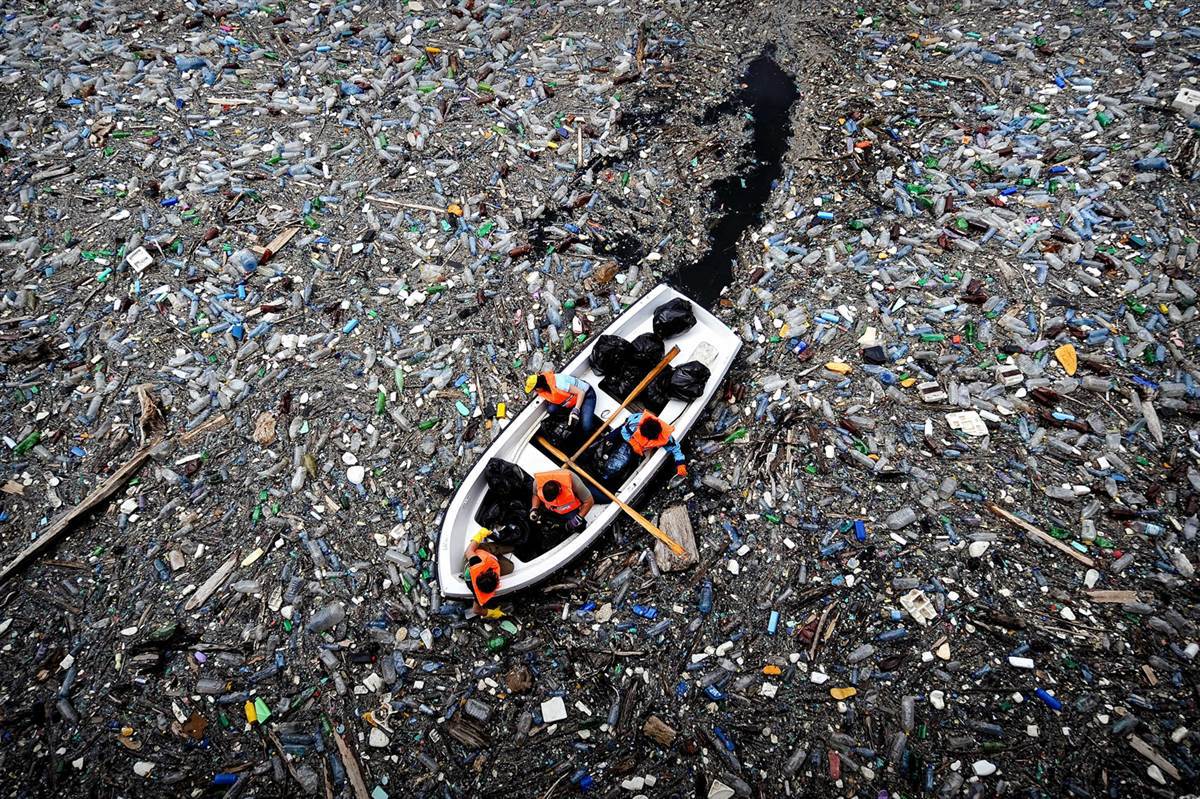The benefits of tap water for the environment
One of the main reasons that led many institutes to take the decision to totally eliminate the use of plastic bottles during meals or breaks from lessons, bringing only tap water to the canteens and desks, is the growing sensitivity to related issues. to eco-sustainability, as it contributes to the environmental cause, reducing the production of polluting waste.
Plastic and environment

The biggest pollution factor of our planet is plastic.
The term plastic is used to indicate a series of materials composed of polymers, macromolecules that can be obtained from substances derived from petroleum (eg ethylene or benzene) or from other sources.
The production cycle of plastic materials starts from oil and reaches the realization of the product through a series of steps that can be summarized as follows:
petroleum → monomers → polymers → plastic materials → finished product
There are different types of plastic, such as thermoplastic and thermosetting polymers:
-
thermoplastic polymers (the 'plastic' proper) are those that, if heated, take on a soft or even liquid consistency, such as nylon (or polyamide) or PVC (polyvinyl chloride or polyvinyl chloride), and that with cooling harden;
-
thermosetting polymers (or resins) on the other hand, when subjected to certain temperatures or in the presence of particular substances, are transformed into rigid, insoluble and non-fusible materials, such as polyurethane (PU).
The great diffusion that plastic has had and has is based on some of its characteristics that make it a unique material: flexible, light, hygienic and with an excellent cost / effectiveness ratio. However, in recent years we have also noticed the negative effects of plastic on the environment, mainly due to difficulties in disposing of this material, considering that it takes more than 400 years for plastic to degrade.
In fact, according to a study published in Science Advances, and recently awarded by the Royal Statistical Society, of the 8.3 billion tons produced until 2015, 6.3 have become waste. Only 9% of these 6.3 billion tons were recycled, the largest share - 79% - is accumulating in landfills or ends up in the environment, dispersed as garbage. If we continue at this rate, by 2050 there will be 12 billion tons of plastic in landfills.
The costs for human communities and ecosystems are enormous. It is estimated that the impact of plastic pollution on the oceans amounts to eight billion dollars a year. The most affected sector is fishing, above all due to the decrease in water resources. Over 270 species of animals among marine mammals, reptiles, birds and fish are trapped in plastic waste such as abandoned fishing nets: the consequences are often deadly. 240 are instead the animal species that most often end up victims of plastic ingestion. In this case intestinal blockages, lesions and ulcers are almost always fatal. Serious economic impacts also occur in the maritime trade and tourism sector.


